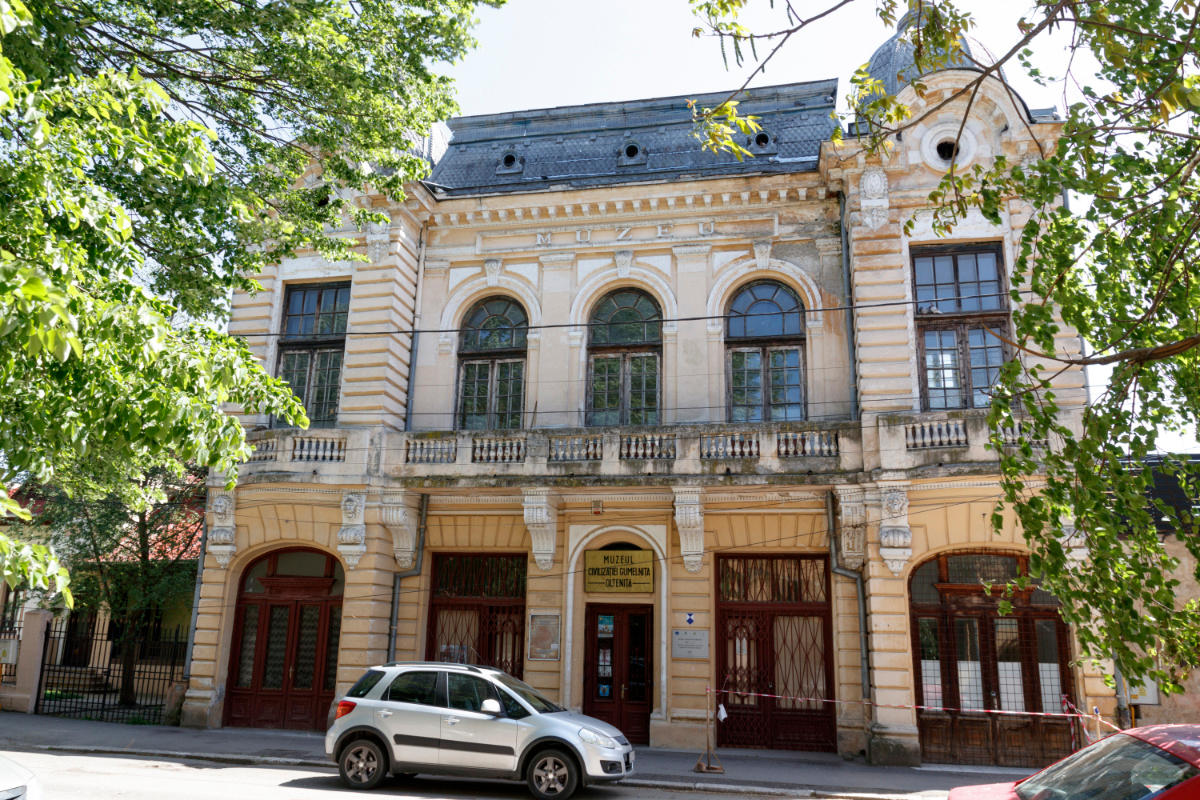Museum of Civilization Gumelniţa Olteniţa
Category MuseumLOCATION
101 Argeş Street
915400 Olteniţa
DESCRIPTION
The Oltenita Museum exhibits some of the most beautiful pieces belonging to the Neolithic and Bronze Age, as well as the Geto-Dacian civilization. An example of the represented civilizations is the Dudesti Civilization, which evolved at the beginning of the 5th millennium BC, being considered the oldest Neolithic civilization attested in the Miastasi part of Muntenia. The bearers of this civilization dealt with the raising of cattle, cultivation of the land, hunting, harvesting s.a. The ceramics of this age are decorated with fine pleats and incisions, plus a beginning of excision. Near Oltenita settlements of this civilization were discovered in Radovanu, Popesti-Vasilati and Cascioarele communes.
The Boian civilization was spread on both banks of the Danube in all Muntenia and Northern Bulgaria. People were occupied in: plant cultivation, animal husbandry and hunting. The ground stone tools they used were in part microlite. Axles and tesles were made from polished stone. Brass objects were very rare. They lived in surface houses (as opposed to houses dug in the ground), built from clay and wood, with a triangular roof, having the hearth in a corner or in the middle. The ceramics were decorated in a wide variety of styles: linear strips, triangular impressions on the edges, excision and white ink. The rare plastic is represented by antropomorphic or zoomorphic figurines. A number of settlements belonging to this civilization and even some necropolises were discovered around Oltenita, some of which were archaeologically researched: Oltenita, Radovanu, Spantov, Popesti-Vasilati, Valea Argovei, Sultana and Cascioarele.[1]
The exhibited materials are from the following periods:
- The Neolithic age, with objects from the Dudesti civilizations (the beginning of the millennium V i. Cr. - ceramics), Boian (anthropomorphic or zoomorphic figures, ornamented, sculptured and inlaid with white powder, silex tools, harpoons, axes) and Gumelniţa second half of the 5th millennium BC - bone tools, silex tools, stone, etc.);
- The Bronze Age, represented by the civilization Cerna Voda I and Cerna Voda II, the civilization Glina and Tei, the civilization Radovanu;
- Antiquity, with cultural objects from the Geto-If (6th century Chr.) Civilization.
One of the high-value exhibits of the Gumelniţa Civilization Museum are the jewelery treasures from Radovanu-Neguleasa dating from the sec. XVI-XVII or from Nuts, Colibasi and Chirnogi.
A valuable numismatic collection can also be admired in the museum, the most important of which is the treasury of histrion coins discovered at the Borderlands, which is a proof of the relations between the Geto-Dacian communities and the Greek cities on the Black Sea.[2]
HISTORY
The museum was founded in 1957 thanks to a donation made up of 902 archaeological pieces by Barbu Ionescu, an accountant by profession, who was also the first director of the museum until 1968. In 1968 Done Serbanescu was appointed director. He reorganized and modernized the museum. The collections have increased considerably, reaching 15,500 archeological and numismatic objects. The building was built in 1926, in a French neo-classical style, with the purpose of being used as a place for cultural events. For a short period of time it was used as the branch of the National Bank of Oltenita and the District People's Council.[3]
In 2001, the institution changed its name to the Gumelnita Civilization Museum. Some of the exhibits within the museum have been discovered in the archaeological excavations at Gumelnita, Hotarele, Neagoesti, Izvorul, Cascioarele, Catalui, Radovanu, Chiselez, Mitreni and many other localities, which prove the human presence in the southern part of the Romanian Plain.
SITE SIGNIFICANCE
The Museum of Civilization Gumelniţa Olteniţa is a representative museum of the Gumelnita Neolithic culture.
VISITOR INFORMATION
Visiting program: every day, 9am to 5pm. Closed: Monday
OTHER INFORMATION
In the museum there are exhibited objects belonging to the Gumelnita Eneolithic culture: stone, ceramics, figurines, anthropomorphic and zoomorphic vessels, harpoons.
CLASSIFICATION OF THE SITE
Historical and archaeological site
[1] Muzeul Civilizatiei Gumelnita, in pericol, 2006
https://romanialibera.ro/cultura/arte/muzeul-civilizatiei-gumelnita--in-pericol--51919
[2] Muzeul Civilizaţiei Gumelniţa
http://www.cesavezi.ro/obiective-turistice/2-institutii-de-cultura/978-muzeul-civilizatiei-gumelnita
[3] Muzeul Civilizaţiei Gumelniţa




